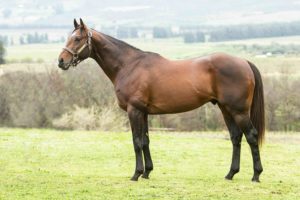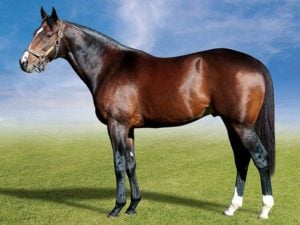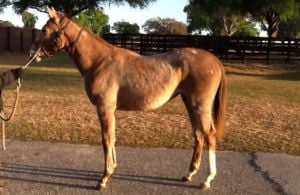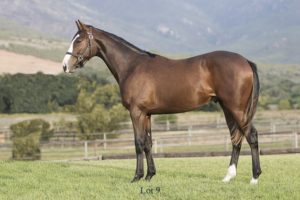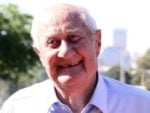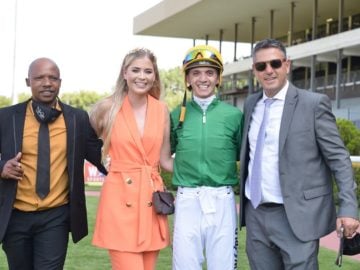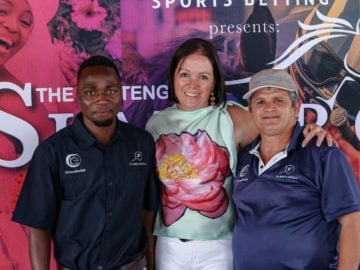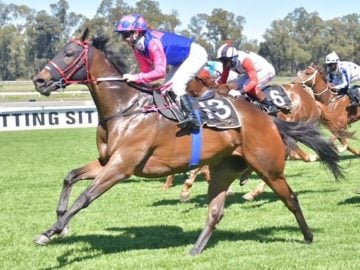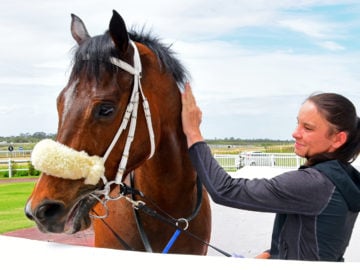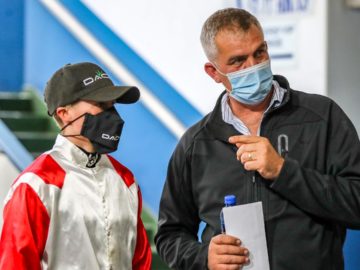A visit to Moutonshoek is like a transatlantic journey. On speed. But with good food, good wine and more importantly, good company. What it doesn’t come with, unfortunately is a good road, but as the ever charming Jacqui van der Merwe says cheerfully, the municipality are looking into it and have promised to resurface the road.
In 2018.
First impressions at arriving at Moutonshoek are something akin to a shipwrecked sailor finally encountering dry land.
Second impressions are that you have arrived in God’s country. Perhaps it’s the Jurassic looking sandstone outcrops reminiscent of Utah’s Monument Valley, or perhaps it’s that when he receives an incoming call, Bennie van der Merwe’s cell phone rings out The Good, The Bad and The Ugly theme tune.
Either way, it’s the sort of place you want to hitch your horse and stay for a while and if locally produced gin, a good red wine and intelligent conversation are your thing, then Bennie van der Merwe is your man.
“The perfect business model for a stud farm is 30 mares,” opines Bennie. Few would disagree, so why two resident stallions? His green eyes sparkle with mischief. “There are 3 things that make a successful stallion: a superior female line, a superior male line and superior track performance.
And even then only 1 out of every 20 stallions makes it. A successful stud stallion is like the Holy Grail.
The problem with having horses is that you make friends and once you’ve made friends, you build stables, you end up with shares in stallions and you accumulate mares. We had 30 and that was fine and then things grew to over 50 and, well, you’ve seen the road,” he shrugs.
“We figured we’d better get our own.”
Big horses
And so the hunt was on. Interestingly, ‘Team Moutonshoek’ had their eye on Marchfield as an early 2 year old. Why Marchfield?
“Marchfield is by A.P. Indy, who is the emperor of North American stallions – it’s no accident that 4 out of the top 5 US sires are A.P. Indy line horses.
Secondly, he’s a two turn horse that’s performed on turf and poly, so he’s ideally suited to the South African market. We used to get our matings done by Charles Faull. We still go back to the fountain from time to make sure we are on the right track – he does the same by hand. Eventually we sat him down and built a computer programme based on his selection criteria. Now we just punch in the pedigrees, but no matter what programme you use, Marchfield is a great mating. Charlie Faull found Marchfield, actually. He was a homebred that belonged to Canadian businessman Eugene Melnyk who owned the likes of Speightstown and Flower Alley. Marchfield finished 2nd in the Coronation Futurity over 1700m in his second start at two.
We made various offers at roughly six month intervals throughout his career, but they were having too much fun – he was one of the favourites for the Breeders’ Cup Turf in 2009 when he got injured. On 30 September 2009 the Blood Horse’s second headline of the day was “Marchfield Injured – Racing Career In Doubt”. We went back to Melnyk and agreed a deal, but they wanted 6 months to see whether they could get him sound enough to race again. When the six months were up, he said his wife liked the horse’s pedigree and he wasn’t prepared to part with him.”
Mambo instead
“Not too long afterwards, bloodstock agent Alistair Roden happened to be at Lane’s Ends when Will Farish received a phone call from Larry Bramlage to say Mambo In Seattle had been injured in training. Alistair rang bloodstock agent Hugo Merry, Hugo rang Jehan Malherbe, who in turn rang Chris Gerber and in about an hour we’d made a cheeky offer. They came back and said if we upped the offer by about $100k we could have him.”
“I was on holiday in the bush at the time, but happened to have my passport with me. I sorted out the wife and kids and flew to Kentucky. I was still wondering how I was going to find my lift, when Alistair, one of the Lane’s End staff walked up to me and said ‘You must be Bennie’. Apparently I look like a South African!”
“Before I went to see Mambo, I asked to have a look around the main barn to get my eye in. I got to look at Kingmambo, Lemon Drop Kid, Mineshaft and A.P. Indy himself. Then they took me to the quarantine facility where Mambo was being housed. He’d run his best fractions two weeks before and was absolutely magnificent. On my way out when one of the Lane’s End bloodstock guys ran to the car, frantically trying to flag me down. ‘Do you like him? Because there are 7 guys up at the office waiting to have a Dutch auction for him if you don’t.’ I went up to the office with him, put my head around the door and said ‘Sorry boys, he’s coming to South Africa!’ So we’d been after Marchfield and got Mambo instead and we’ve all seen how he’s turned out (6 winners this week including 2 Gr3’s!)”
Back to Marchfield
“That was in about 2010. Marchfield retired to Park Stud in Orangeville, Canada in 2011 with 7 wins and 8 places to his credit, including the third leg of the Canadian Triple Crown, the Breeders’ Stakes, the Gr2 Autumn Stakes, and Sky Classic Stakes, as well as the Gr3 Dominion Day Handicap an d earnings in excess of $1 million. He was also voted Canadian champion older male in 2008 and 2009. Melnyk originally sent 50 mares to support him, but when the Canadian industry tanked, Melnyk brought his mares back to Florida. He’d divorced the wife who liked Marchfield’s pedigree and he had no ties to the horse anymore, so he got hold of his agent to ask whether ‘those South African guys were still around’. The agent said yes, but probably not for the original asking price.”
“At that stage he hadn’t sold a weanling yet. I went over to have a look and decided I wanted to inspect him from every angle – close up, turned out, look at his yearlings etc. It was 22 March, the first official day of spring and I had visions of lying in a Canadian field inspecting yearlings.
“Instead I got a foot of snow! I liked what I’d seen of his progeny – they were strong and correct, with good bone, but it’s still a nerve-wracking decision. Not everyone likes blondes! But we bought him and he arrived here in July 2013.”
Canadian legacy
“When his first yearlings went on sale in Canada and fetched the second and 3rd highest price on auction. Then a filly sold for $470k in the USA. I was hoping she was out of a mongoose, but she was well bred and had paddock value” he says with genuine disappointment.
“Then his 2yo’s started running and we were watching the stats like a hawk, but there was nothing – which was to be expected as he wasn’t an early horse and doesn’t have the pedigree for producing early speed. Then with about 6 weeks left of the season, suddenly the started firing. A son ran a place in the Coronation Futurity (the same race Marchfield placed in as a 2yo) and it looked as though Marchfield was going to be champion first season sire.”
“Then the week before the season closed, he had a filly running in a maiden race that had to be scratched and Marchfield lost out on the first season sire title by less than $2,000 to a horse called Not Bourbon, who had been a precocious 2yo himself. Of course, the filly won first time out as a 3yo.” He shakes his head at the vagaries of fate. “But the following year he won champion 2nd season sire,” he says with satisfaction.
Marchfield has settled in well at Moutonshoek, but there was a slight snag. “We thought Marchfield was a total no brainer and assumed all the Mambo shareholders would automatically want to buy in, but it turned out not quite the case, so we have a slightly different set of shareholders in Marchfield and we went out and bought some mares to support him, so now we’ve got about 120 mares,” he laughs ruefully.
Local reception
“The support has been good and even more so since his first foals arrived. Like the ones I saw in Canada, they are very correct, with good bone, but what we’re so pleased about is that they’re on the leg.
The breeding community seem to like the foals and when they see how good his matings look on paper, they can’t believe it.
I had a call at 7 o’clock one evening from someone who had been on a stud farm inspection and picked out a couple of yearlings in the paddock. When they heard they were Marchfields, they rang me up and booked covers for the next morning!”
“We took a few to the CTS Premier Sale and a few to Val de Vie. They’re not early horses,” he emphasises, “so we took a bit of a bath, but we felt it was important for people to see what the Marchfields look like and are quietly excited by who bought them. Dennis Drier, Glen Puller bought one for R250k, Mike Bass bought 2 for Marsh Shirtliff. Brian Burnard got one for R100k and came to me afterwards to ask why the horse didn’t go for more and I explained that that was what the market dictated. We are in the business of selling horses, not chasing up bids.”
It’s an awfully long drive to Moutonshoek and an awfully long wait till 2018. As Bennie says, not everyone likes blondes, but for those that do, Marchfield will be well represented at the 2016 National Yearling Sale.



